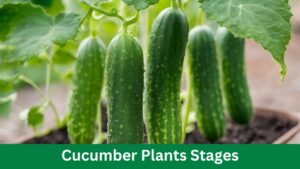Improper watering and inadequate sunlight are common mistakes when growing cucumbers. These mistakes can result in stunted growth and poor fruit production.
Growing cucumbers can be satisfying and rewarding. However, it’s essential to know potential mistakes that can hinder your crop’s growth and yield. You can ensure a successful cucumber harvest by understanding and avoiding common errors.
We will discuss some common mistakes gardeners make when growing cucumbers and provide tips on avoiding them. Whether you are a beginner or an experienced gardener, this information will help you optimize the growth of your cucumber plants and maximize your harvest.
Common Cucumber Growing Mistakes
When growing cucumbers, it’s easy to make common mistakes that can hinder their growth and production. Avoiding these mistakes can lead to healthier plants and a bountiful harvest.
Here, we’ll discuss the most common cucumber growing mistakes and how to prevent them from ensuring a successful crop.
Overwatering
One of the most prevalent mistakes novice gardeners make when growing cucumbers is overwatering. While cucumbers need consistent moisture, excessive watering can lead to root rot and other fungal diseases.
It’s essential to allow the soil to dry out slightly between waterings to prevent waterlogged conditions. Proper drainage is crucial for cucumber plants to thrive.
Improper Sunlight Exposure
Cucumbers require ample sunlight to flourish. Insufficient sunlight can stunt growth and reduce fruit production.
It’s essential to place cucumber plants in an area that receives full sun for at least 6-8 hours daily. Ensure that nearby structures or larger plants do not shade the plants, which can impede their access to sunlight.
Inadequate Soil Nutrients
Nutrient-poor soil can hinder the growth and development of cucumber plants. Providing a nutrient-rich environment is crucial to amending the soil with organic matter such as compost or well-rotted manure.
A balanced fertilizer formulated for vegetables can help plants access essential nutrients throughout their growing season.
Understanding Cucumber Watering Needs
Cucumbers are a popular addition to many home gardens, but growing them successfully requires a deep understanding of their specific needs. One critical aspect of cucumber cultivation is understanding the watering requirements of these delicate plants.
Getting the watering right can make all the difference in the success of your cucumber crop. In this section, we’ll explore the crucial factors in watering cucumbers, including effective watering techniques, signs of overwatering, and the dangers of underwatering.
Effective Watering Techniques
When watering your cucumbers, the key is to provide consistent moisture without drowning the plants. A good practice is to water your cucumbers deeply, allowing the soil to dry out slightly between waterings. This encourages the plants to develop deep, healthy root systems.
Mulching around the base of the plants can help retain moisture and reduce the need for frequent watering. Additionally, watering in the morning allows the foliage to dry off during the day, reducing the risk of fungal diseases.
Signs Of Overwatering
Overwatering your cucumber plants can lead to many problems, including yellowing leaves, wilting, and root rot. It’s essential to pay attention to the soil moisture and the appearance of the plants to avoid overwatering.
If you notice waterlogged soil or drooping, yellowing leaves, it’s a sign that you may be overwatering your cucumbers.
Dangers Of Underwatering
Conversely, underwatering can also spell trouble for your cucumber crop. When cucumber plants don’t receive enough water, they may develop stunted growth, wilted leaves, and a bitter taste in the fruit.
It’s crucial to monitor the moisture levels in the soil and provide adequate water during dry periods to prevent dehydration and ensure healthy cucumber growth.
Optimizing Sunlight For Cucumber Growth
Optimizing sunlight is crucial for the healthy growth of cucumber plants. To achieve the best results, it’s important to understand the ideal sunlight conditions for cucumber growth and the harmful effects of insufficient sunlight. Let’s explore how to optimize sunlight for cucumber growth.
Ideal Sunlight Conditions
Cucumbers thrive in full sunlight, requiring a minimum of 6-8 hours of direct exposure daily. When planning the location for your cucumber plants, choose a spot that receives ample sunlight, ideally with some protection from harsh afternoon heat.
This balance ensures that the plants receive enough light without excessive heat stress. The right amount of sunlight promotes healthy growth and enhances fruit production and overall plant vitality.
Harmful Effects Of Insufficient Sunlight
Insufficient sunlight can lead to several detrimental effects on cucumber plants. Plants may become leggy, weak, and disease-prone without adequate light.
Inadequate sunlight can also limit fruit production and negatively impact the flavor and quality of the cucumbers. When cucumber plants do not receive enough sunlight, they may exhibit stunted growth, pale leaves, and reduced photosynthesis, ultimately hindering their potential for a plentiful harvest.
Nutrient Management For Healthy Cucumber Plants
Nutrient management ensures optimal plant growth and productivity when growing healthy cucumbers. Proper nutrient management prevents common cucumber growing mistakes and promotes solid and disease-resistant plants.
This section will delve into essential soil nutrients for cucumber plants and fertilization dos and don’ts. This will help you achieve robust and bountiful cucumber harvests.
Essential Soil Nutrients For Cucumber Plants
For cucumber plants to thrive, they require a balanced supply of essential nutrients in the soil. These key nutrients include nitrogen, phosphorus, potassium, calcium, magnesium, and sulfur.
A deficiency or imbalance in these nutrients can lead to stunted growth, poor fruit development, and increased disease susceptibility.
Fertilization Dos And Don’ts
When fertilizing cucumber plants, it’s important to follow certain dos and don’ts to ensure optimal nutrient uptake and plant health.
- Do Test the soil to determine its nutrient levels before applying fertilizers.
- Do Use a balanced fertilizer with a formulation specifically designed for vegetables, ensuring it contains the essential macro and micronutrients cucumbers need.
- Apply fertilizers at the right time, typically before planting and during key growth stages.
- Don’t Over-fertilize, as excessive nutrients can lead to imbalanced growth and environmental pollution.
- Don’t Neglect the importance of organic matter, which contributes to long-term soil health and nutrient availability.
Frequently Asked Questions On Cucumber Growing Mistakes
Why Do My Cucumber Plants Have Yellow Leaves?
Overwatering, nutrient deficiencies, or diseases may cause yellow leaves on cucumber plants. Ensure proper watering and fertilization, and monitor for any signs of pests or diseases to maintain the health of your plants.
What Is The Ideal Temperature For Growing Cucumbers?
Cucumbers thrive best in temperatures between 70-85°F. Avoid planting them when temperatures are below 60°F, which can stunt their growth and reduce fruit production.
How Often Should I Water My Cucumber Plants?
Cucumber plants should be watered consistently, providing about 1-2 inches of water per week. Adjust the frequency based on weather conditions, ensuring the soil is moist and not waterlogged. Monitoring the soil moisture is crucial for healthy plant development.
Conclusion
Avoiding common cucumber growing mistakes can lead to a successful harvest. With proper care and attention to watering, soil, and sunlight, you can optimize the growth of your cucumber plants. By learning from these mistakes, you can ensure a bountiful crop and enjoy the fruits of your labor.




